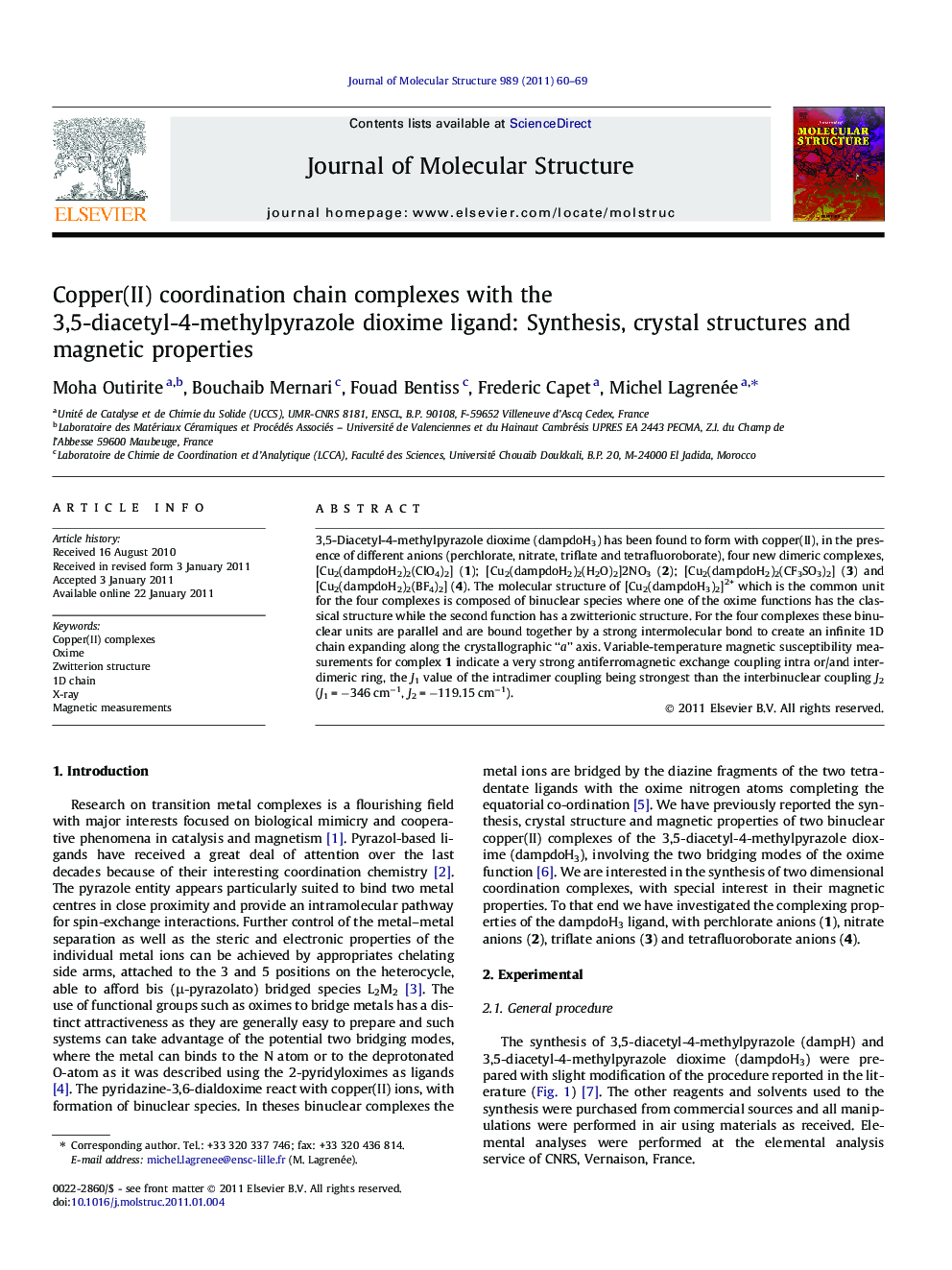| Article ID | Journal | Published Year | Pages | File Type |
|---|---|---|---|---|
| 1409569 | Journal of Molecular Structure | 2011 | 10 Pages |
Abstract
3,5-Diacetyl-4-methylpyrazole dioxime (dampdoH3) has been found to form with copper(II), in the presence of different anions (perchlorate, nitrate, triflate and tetrafluoroborate), four new dimeric complexes, [Cu2(dampdoH2)2(ClO4)2] (1); [Cu2(dampdoH2)2(H2O)2]2NO3 (2); [Cu2(dampdoH2)2(CF3SO3)2] (3) and [Cu2(dampdoH2)2(BF4)2] (4). The molecular structure of [Cu2(dampdoH3)2]2+ which is the common unit for the four complexes is composed of binuclear species where one of the oxime functions has the classical structure while the second function has a zwitterionic structure. For the four complexes these binuclear units are parallel and are bound together by a strong intermolecular bond to create an infinite 1D chain expanding along the crystallographic “a” axis. Variable-temperature magnetic susceptibility measurements for complex 1 indicate a very strong antiferromagnetic exchange coupling intra or/and interdimeric ring, the J1 value of the intradimer coupling being strongest than the interbinuclear coupling J2 (J1Â =Â â346Â cmâ1, J2Â =Â â119.15Â cmâ1).
Related Topics
Physical Sciences and Engineering
Chemistry
Organic Chemistry
Authors
Moha Outirite, Bouchaib Mernari, Fouad Bentiss, Frederic Capet, Michel Lagrenée,
